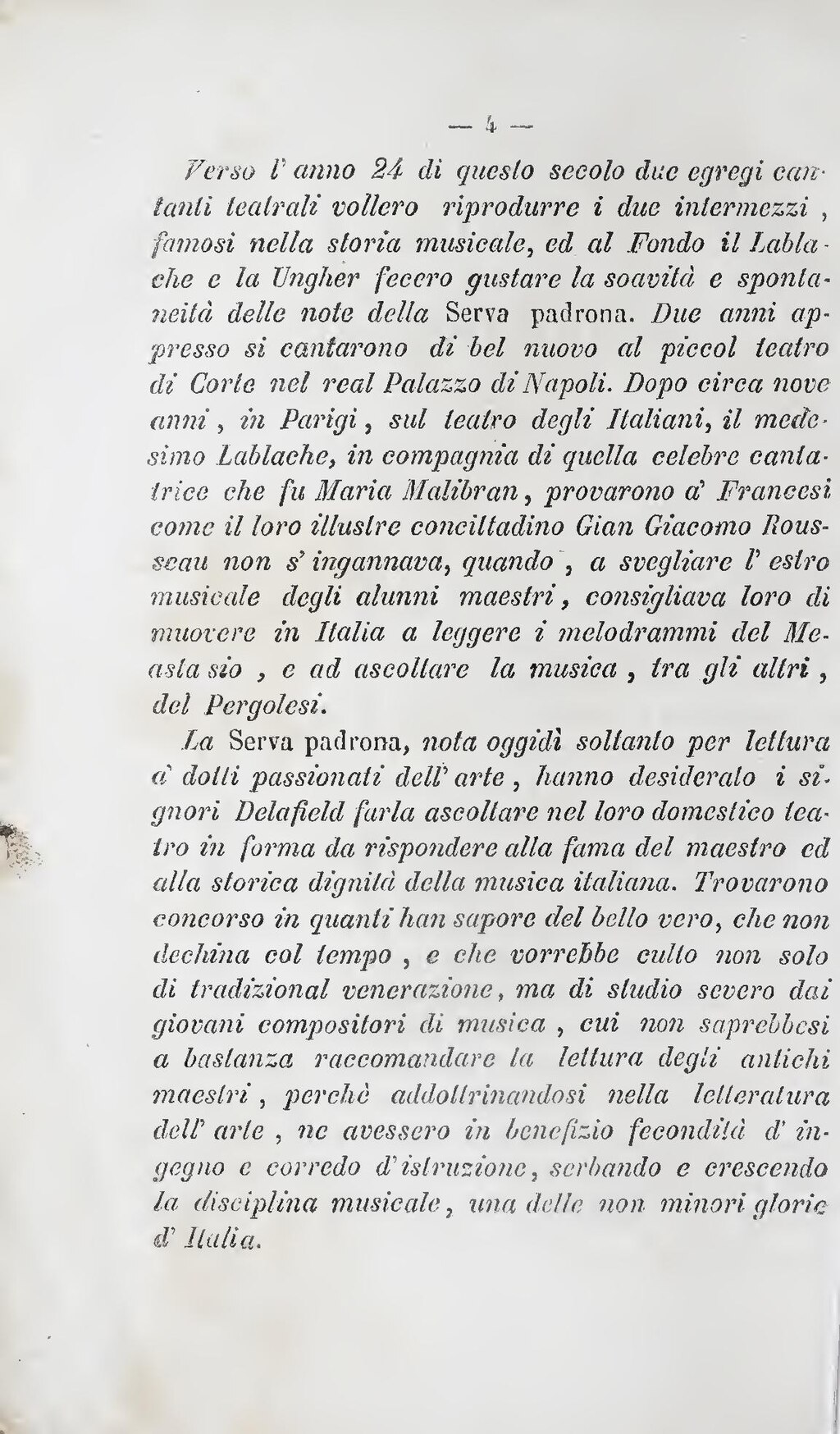— 4 —
Around the year 24 of this century, two illustrious theatrical singers wanted to reproduce the two intermezzos, famous in the history of music, and Lablache and Ungher made the Fondo enjoy the sweetness and spontaneity of the notes of the Serva padrona. Two years later they sang again at the small Court theater in the royal palace of Naples. After about nine years, in Paris, on the Italian theatre, the same Lablache, in the company of that celebrated singer Maria Malibran, proved to the French that their illustrious fellow citizen Gian Giacomo Rousseau was not mistaken, when, awakening the the musical flair of the master students, advised them to go to Italy to read the melodramas of Meastasio, and to listen to the music, among others, of Pergolesi.
La Serva Padrona, known today only as literature by learned enthusiasts of the art, the Delafields desired to have it heard in their domestic theater in a manner corresponding to the fame of the master and the historical dignity of Italian music. They found support from those with a taste for true beauty, which does not dimish with time, and which would become the cradle not only of traditional veneration, but of strict study by young music composers, to whom one could not sufficiently recommend reading the ancient masters, because by indoctrinating themselves in the literature of the art, benefited from the fruitfulness of their intellect and their educational background, maintaining and enriching the musical discipline, one of the not lesser glories of Italy.
